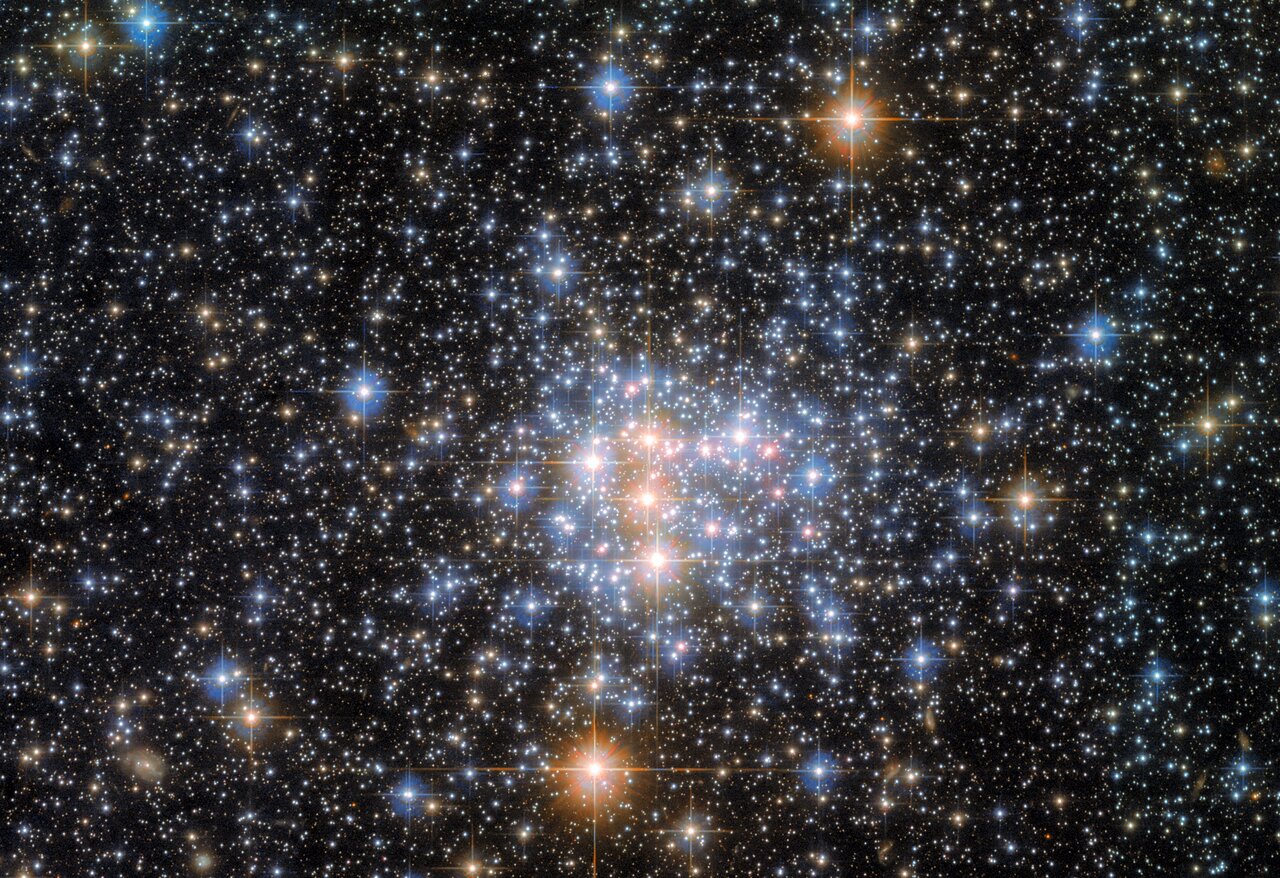Hubble Space Telescope reveals a stunning star cluster (photo)
NGC 376 is in the Small Magellanic Cloud, which contains hundreds of millions of stars.

The stars of the open cluster NGC 376 exude a calm and mesmerizing appearance.
There's a less tranquil scenario at play, too, that keeps things looking as pristine as they seem to be in a new Hubble Space Telescope image of the celestial object.
Open clusters like NGC 376 are beautiful and scientifically valuable objects. This particular loose gathering of stars is located outside our own Milky Way, in a dwarf galaxy called the Small Magellanic Cloud (SMC). Along with the Large Magellanic Cloud, the SMC tumbles through space about 200,000 light-years from Earth. Somehow, both Clouds evade the prying gravitational hands of the Milky Way.
Related: The best Hubble Space Telescope photos of all time
The SMC contains hundreds of millions of stars, according to a European Space Agency (ESA) image caption describing NGC 376. (Hubble is a collaboration between NASA and ESA.) Astronomers consider the galaxy a treasure trove. "Because the SMC is so close and bright, it offers an opportunity to study phenomena that are difficult to examine in more distant galaxies," NASA officials wrote back in 2021, describing another image of the SMC.
And then there's the visual magic. Part of what's so enchanting about this cluster is how the viewer can make out separate stars. "In the case of NGC 376, individual stars can be picked out clearly even in the most densely populated parts of this image," according to ESA's December 2022 statement.
But it's almost a miracle that SMC can retain star-making material in the first place.
Get the Space.com Newsletter
Breaking space news, the latest updates on rocket launches, skywatching events and more!
"For billions of years, the Milky Way’s most massive companions — the Large and Small Magellanic Clouds — have been on a tumultuous journey through space, orbiting one another while being torn by the gravitational pull of our own galaxy," Hubble team members wrote in a description of a 2022 study that shed light on how the Clouds and their dazzling stars have survived so far.
Between us and these beautiful stars is an invisible cocoon of superheated gas. It acts as a shield, protecting the star-making stuff within the smaller galaxies.
And then what Hubble can feast its instruments upon is a vibrant yet calm sea of sparkling stars.
Two instruments onboard Hubble collected the data that went into making this image: the Wide Field Camera 3 (WFC3) and the Advanced Camera for Surveys (ACS). Both instruments collected information to help astronomers learn about the lives of stars, especially their beginnings. ACS also aided the comparison of low- and high-mass stars in different environments, ESA officials said.
Follow Doris Elin Urrutia on Twitter @salazar_elin. Follow us on Twitter @Spacedotcom and on Facebook.
Join our Space Forums to keep talking space on the latest missions, night sky and more! And if you have a news tip, correction or comment, let us know at: community@space.com.

Doris is a science journalist and Space.com contributor. She received a B.A. in Sociology and Communications at Fordham University in New York City. Her first work was published in collaboration with London Mining Network, where her love of science writing was born. Her passion for astronomy started as a kid when she helped her sister build a model solar system in the Bronx. She got her first shot at astronomy writing as a Space.com editorial intern and continues to write about all things cosmic for the website. Doris has also written about microscopic plant life for Scientific American’s website and about whale calls for their print magazine. She has also written about ancient humans for Inverse, with stories ranging from how to recreate Pompeii’s cuisine to how to map the Polynesian expansion through genomics. She currently shares her home with two rabbits. Follow her on twitter at @salazar_elin.









